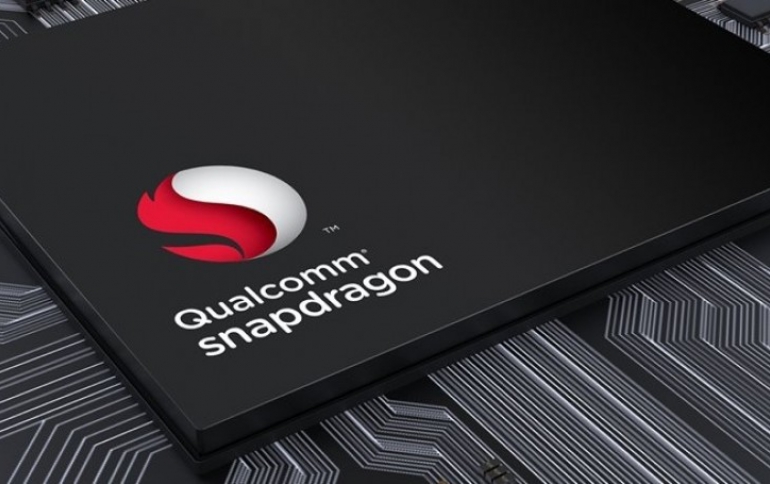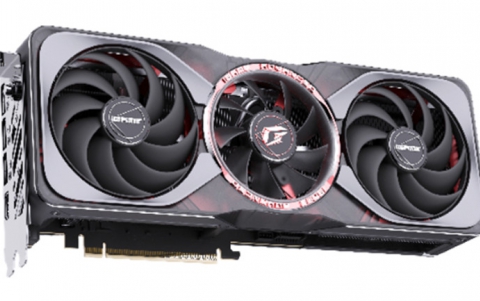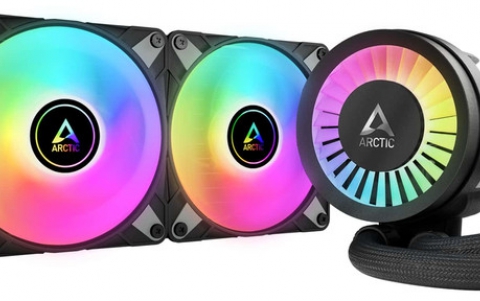
Qualcomm Details Snapdragon 820 Connectivity, Quick Charge 3.0 Technology New Chipsets
Qualcomm Technologies has introduced the new Snapdragon 430 and 617 processors for mid-range mobile devices, the Qualcomm Quick Charge 3.0 technology and provided information about the newly upgraded X12 LTE modem that will be integrated into the upcoming Snapdragon 820 processor. Snapdragon 820
Qualcomm has integrated its newly upgraded X12 LTE modem into its upcoming Qualcomm Snapdragon 820 processor, providing leading 4G LTE and Wi-Fi technologies for premium tier mobile devices. The new modem offers:
- LTE Advanced speeds
- Cat 12 (up to 600 Mbps) in the downlink
- Cat 13 (up to 150 Mbps) in the uplink
- Up to 4x4 MIMO on one downlink LTE carrier
- Connectivity support in unlicensed spectrum:
- 2x2 MU-MIMO (802.11ac)
- Multi-gigabit 802.11ad
- LTE-U and LTE+Wi-Fi Link Aggregation (LWA)
- Comprehensive service across connection types:
- Next Gen HD Voice and Video calling over LTE and Wi-Fi
- Call Continuity across Wi-Fi, LTE, 3G, and 2G
- RF front end:
- Advanced Closed Loop Antenna Tuner
- Qualcomm RF360 front end solution with CA
- Wi-Fi/LTE antenna sharing
This is the first publicly announced processor for use in mobile devices to support LTE Category 12 in the downlink and Category 13 in the uplink, providing up to 33 percent and 200 percent improvement over its predecessor's download and upload speeds, respectively. Also available as a discrete chipset, the X12 LTE modem has demonstrated peak download speeds of up to 600 Mbps through 3x downlink carrier aggregation and 256-QAM, as well as peak upload speeds of up to 150 Mbps through 2x uplink carrier aggregation and 64-QAM. The Snapdragon 820 processor is also the first publicly announced processor to offer LTE support for 4x4 Multi-Input Multi-Output (MIMO), designed to double download throughput speeds on a single LTE carrier. In addition, it features Uplink Data Compression (UDC), a feature that is currently unique to select Snapdragon LTE modems. The Snapdragon 820 processor is also the first publicly announced processor with Advanced Closed Loop Antenna Tuning when paired with the QFE2550 Antenna Tuner, designed to dynamically optimize RF performance in real network conditions, particularly for challenging metallic industrial designs in premium tier handsets. Advanced Closed Loop Antenna Tuning is designed to reduce dropped calls, improve cell edge throughput and even lower power consumption.
In addition to its LTE features, the Snapdragon 820 processor also supports high Wi-Fi performance and connectivity through Qualcomm VIVE 802.11ac with Qualcomm MU EFX MU-MIMO technology, along with tri-band support, through multi-gigabit 802.11ad (11ad) Wi-Fi. With 2x2 802.11ac (11ac) plus MU-MIMO technology, devices will have the ability to achieve a range increase of up to 50 percent over the 1x1 configuration. The peak rate of 2x2 80 MHz 11ac is up to 867 Mbps, while the 11ad peak rate is up to 4.6 Gbps. Additionally, 11ad offers up to a five time increase in user throughput with similar power consumption as 11ac. With dynamic session transfer between 11ad and 11ac, devices will have the ability to achieve high performance connectivity in a power-efficient way. The high bandwidth and speeds offered by 11ac Wi-Fi, 11ad Wi-Fi, and MU-MIMO will improve overall quality of service.
The Snapdragon 820 processor features convergence technologies between LTE and Wi-Fi, and between licensed and unlicensed spectrum:
- LTE-Unlicensed (LTE-U). The Snapdragon 820 processor is the first publicly announced processor for use in mobile devices to offer LTE-U support when paired with the WTR3950, increasing mobile network capacity and user throughput by aggregating LTE in licensed and unlicensed bands.
- LTE and Wi-Fi Link Aggregation (LWA). LWA is another method of aggregating licensed and unlicensed spectrum. It is designed to allow mobile operators to utilize their Wi-Fi infrastructure to augment licensed LTE network capacity with unlicensed spectrum capacity.
- Next-generation Wi-Fi calling. The X12 LTE modem supports next-generation HD Voice over LTE (VoLTE) and Video over LTE (ViLTE) calling services using the IP Multimedia Subsystem, with support for call continuity between LTE and Wi-Fi. Making use of the cognitive capabilities of Qualcomm Zeroth, the X12 LTE modem monitors real-time Wi-Fi quality to decide if and when to shift the call from LTE to Wi-Fi or back.
- Antenna sharing. The new modem supports several antenna sharing schemes between LTE and Wi-Fi, designed to make it easier for manufacturers to design devices with advanced technologies like LTE-U, 4x4 LTE MIMO, and 2-stream Wi-Fi, with attractive form factors and minimal performance impact on either technology.
Devices based on the Snapdragon 820 processor are expected to be available in 1H of 2016.
Quick Charge 3.0
Quick Charge 3.0, Qualcomm's next-generation fast charging technology, employs Intelligent Negotiation for Optimum Voltage (INOV), a new algorithm developed by Qualcomm Technologies, designed to allow portable devices the ability to determine what power level to request at any point in time for optimum power transfer. With Quick Charge 3.0 you can charge a typical phone from zero to 80 percent in about 35 minutes compared to conventional mobile devices without Quick Charge that may typically require almost an hour and a half.
With, INOV and other advancements, Quick Charge 3.0 is designed to be up to 38 percent more efficient than Quick Charge 2.0, while also implementing additional steps to help protect battery cycle life. Additionally, when used with Qualcomm Technologies' latest parallel charging configurations, Quick Charge 3.0 can:
Help improve fast charging up to 27% or reduces power dissipation by up to 45% when compared to Quick Charge 2.0.
Charge up to 2x faster than Quick Charge 1.0
Available now, Quick Charge 3.0 will be featured as an option on select Qualcomm Snapdragon processors, including Snapdragon 820, 620, 618, 617 and 430, and is anticipated to appear in mobile devices launched next year.
Additional improvements offered by Quick Charge 3.0 include flexibility over Quick Charge 2.0, notably in terms of charging options. While Quick Charge 2.0 offers four charging voltages at 5V, 9V, 12V and 20V, Quick Charge 3.0 provides flexibility with 200mV increments from 3.6V to 20V. This allows the phone to request just enough voltage to reach the desired charge current, resulting in minimized losses, increased efficiency, and improved thermal performance.
Quick Charge 3.0 also maintains forward and backward compatibility with previous versions of Quick Charge as well as with connectors, including USB Type-C, as well as the same charging speed, cable independence offering OEMs several options, and UL certification.
New Snapdragon 430 and 617 processors
Qualcomm's new Snapdragon chipsets, the Snapdragon 430 and the Snapdragon 617, offer advances in both multimedia and connectivity for mid-range mobile devices.
The Snapdragon 430 features X6 LTE, with Cat 4 downlink speeds of up to 150 Mbps and support of 2x10 MHz Carrier Aggregation, and Cat 5 uplink speed of up to 75 Mbps via support for 64-QAM – a first in this tier. The chip supports excellent image quality for dual camera configurations and sensors up to 21MP. It uses the new Qualcomm Adreno 505 GPU with features such as Open GL ES3.1, Android Extension Pack, and OpenCL 2.0.
The Snapdragon 617 improves on both the connectivity and capabilities of the Snapdragon 430. It integrates the X8 LTE modem, featuring support for Cat 7 download speeds of up to 300 Mbps and upload speeds of up to 100 Mbps using bi-directional 2x20 MHz carrier aggregation. It also shares the same software advances, dual-ISP and camera architecture of the Snapdragon 620 and 618. In addition, the same software package runs the Snapdragon 617, 618 and 620, enabling OEMs to deliver these products quickly. For optimal RF performance, the Snapdragon 617 and 430 pair with WTR 2965, the new cost-optimized RF transceiver for global carrier aggregation.
Snapdragon 430 |
Snapdragon 617 |
|
|---|---|---|
| CPU | Up to 1.2 GHz octa-core CPU 64-bit |
Up to 1.5 GHz octa-core CPU |
| GPU | Adreno 505 GPU |
Adreno 405 GPU |
| Modem | X6 LTE
RF360 support |
X8 LTE
RF360 support |
| Video | 1080p@30fps playback with native HEVC Full HD H.264 capture |
1080p60 playback with H.264 (AVC) and H.265 (HEVC) 1080p30 capture with H.264 (AVC) |
| Camera | Up to 21 MP | Up to 21 MP |
| Display | Up to 1080p display on device | Up to 1080p display on device |
Both the Snapdragon 617 and 430 use the ARM Cortex A53 CPUs in octa-core configurations. Both also include support for Qualcomm Quick Charge 3.0 fast-charging technology. Each uses the Qualcomm Hexagon DSP, supporting low power sensor and advanced audio.
Commercial devices featuring the Snapdragon 430 are expected to be available in Q2 2016, and the Snapdragon 617 is expected to be in commercial devices before the end of 2015.





















